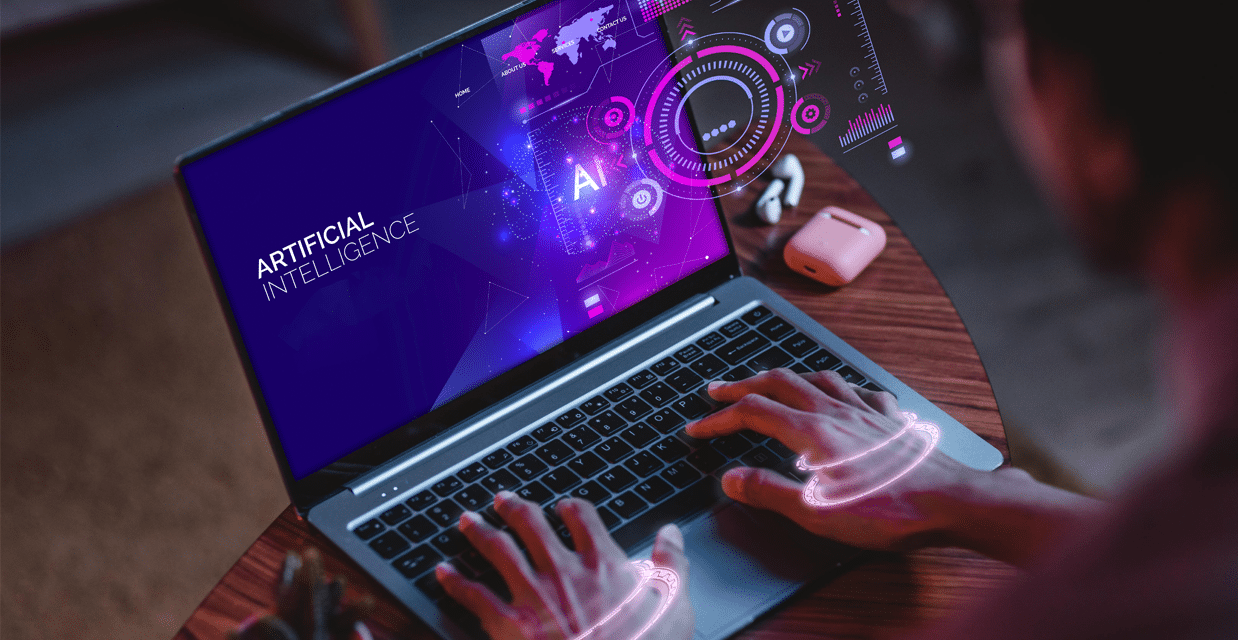The area of Artificial Intelligence (AI) has grown exponentially over the past few decades...
From its initial inception in the 1950s and through two downturns, we are now in a new heyday with technology and ideas developing all the time.
The term AI has probably been more successful than the actual technology having been used liberally across science and popular culture to describe many different technologies and ideas for a long time. As the AI sector has grown in terms of innovation, value and profile the terms and definition of AI also appear to have changed.
That is to be expected as something evolves but there is a risk that it leads to things being less clear or even to snobbery. For example, in a recent article on a new AI platform, it warned of the risk of ‘off-the-shelf’ solutions that falsely proclaim their AI capabilities and components just to get attention and be seen as modern.
A reasonable warning, but it also stated that only data driven machine learning was true AI and everything else was just pretending to be AI. This is by no means an uncommon sentiment – bemoaning an idea, an area or particular technology that it is not really AI, or not as intelligent as other areas of AI, appears to be a regular thing for some technologists.
Clarity of terminology is obviously important but is attempting to identify a differentiation just self-serving snobbery or are there AI technologies masquerading as something they are not? Let’s take a look at some of the high-profile areas to see if there is “true AI” and lots of “false AI” out there that we need to be wary of. First off though, we need to be able to identify AI.
The definition of AI
The phrase Artificial Intelligence was first coined in 1956 by the Stanford University computer scientist John McCarthy. He defined it as “the science and engineering of making intelligent machines”. Whereas the Oxford English dictionary defines Artificial Intelligence as “the study and development of computer systems that can copy intelligent human behaviour”.
Unfortunately, these definitions do not really help us assess what is and is not AI as the word “intelligence” is still ambiguous.
The Oxford Dictionary describes intelligence as “the ability to learn, understand and think in a logical way about things; the ability to do this well”. Perhaps the view that computers, or software, that can learn, understand and think is probably the clearest definition of AI that we are going to get right now; though thinking is still quite difficult to define. This gives us a bit more to work from when determining whether something is true AI.
Different areas of AI
There are many different areas of AI, many of which are only really known or understood to those involved in them. There are a small number of broad areas that are typically described as AI that appear to be more in the general consciousness and the basis for much of the AI debate in the media:
Machine Learning – we will start with the most popular area and where there appears to be little doubt of its AI credentials. Machine learning is where a software algorithm is provided data sets and trained to identify what combination of data are likely to result in a specific outcome. The trained algorithm can then be used to predict the outcome when it is provided with different data.
The level of detailed analysis and prediction possible often far exceeds the capability of a human resulting in a lot of excitement of the potential benefits that machine learning can offer.
Based on our definition of AI (can learn and understand) machine learning appears to meet the criteria. It is taught, therefore learns, and then understands new data to make a prediction.
Rules-based systems – rules-based systems, once also referred to as expert systems, use a series of rules to replicate human decision making. A rule is effectively how a piece of software or a machine should respond when a specific thing happens, such as receiving a new piece of data. By combining and nesting rules these systems can make quite complex decisions.
Rules-based system were considered AI once upon a time but have fallen out of favour in recently years. In terms of our definition, rules-based systems are “taught” through the creation of the rules that are then used to understand and make a decision. As such the learning element is not completed actively and, potentially, this is the reason that some do not consider this area to be true AI.
Robotic Process Automation – Robotic Process Automation (RPA) is a type of business process automation where software is used to complete repeatable business processes in another system. The difference with RPA is that it does this by replicating the actions a human would perform rather than directly integrating with the target system. RPA software has the capability to log in into a system, extract information and then use it to progress a process and make potentially complex choices. It has gained great popularity in the last decade leading to lots of scrutiny.
In terms of RPA being AI, in a similar way to rules-based systems it can be programmed to perform as a human would and make relatively simple decisions. As such, it does meet some of the criteria but, again as with rules-based systems, the capability of active learning is not really present.
Each of these technologies does include elements of what we commonly think of as AI some to a greater extent than others. Each requires teaching in one form or another to perform a level of understanding or decision making. None of them really meet the definition of intelligence but rather a step towards it so to suggest that one is AI rather than another may seem unreasonable.
So why the snobbery?
Well on the one hand it could be self-serving or defensive posturing so that, by suggesting other technologies are not AI, to make their own area or passion appear better. Fairly transparent but that does not mean it is not true.
Alternatively, it might be the case that familiarity and simplicity lead to a degree of apathy. Technology like rules-based systems have been around for decades now, once upon a time it was the leading edge of AI but now is so familiar that people are not impressed by it. That doesn’t mean it should not be considered AI though. It led the way for other technologies.
It could be the case that as we get accustomed to a type of AI, and it becomes common place, we no longer find it amazing. As we all know, the thing about AI is that it is supposed to be amazing and capture the imagination. Effectively we downgrade its intelligence when something more intelligent comes along.
What We Think
In reality it does not really matter whether these technologies are labelled as AI or not.
What is important is the value they provide and that depends on what they are being used for. The best machine learning solution available is only useful if there is high quality data available to train it. If there is not, then a rule-based solution may well drive more benefit. Similarly, an RPA solution that automatically processes invoices might not make any intelligent decisions but can still save an organisation thousands of hours of effort.
Whether it is really smart or really dumb AI technology, it should be selected if it is the best technology for the requirements or problem in hand. Technology for the sake of technology can on lead to disappointment and frustration. Many business problems are complex, and a single technology is unlikely to solve them all. AI technologies (true, false, dumb or smart) used in combination have the potential to do some really intelligent things.
Related posts
How businesses are reducing operational costs with AI
AI is revolutionising business operations by automating tasks, improving decision-making, and cutting costs. This blog explores case studies from manufacturing, retail, energy management, financial services, and healthcare, showcasing AI’s impact on efficiency and cost reduction.
Boosting Sales with AI: What the Numbers Say
AI is transforming sales by automating processes, personalising customer interactions, and optimising strategies. Tools like chatbots and recommendation systems boost conversions, with personalised recommendations increasing sales by 35% and chatbots enhancing engagement and conversions by 20%. AI also improves lead scoring and real-time data analysis, significantly raising conversion rates and revenue across industries.


